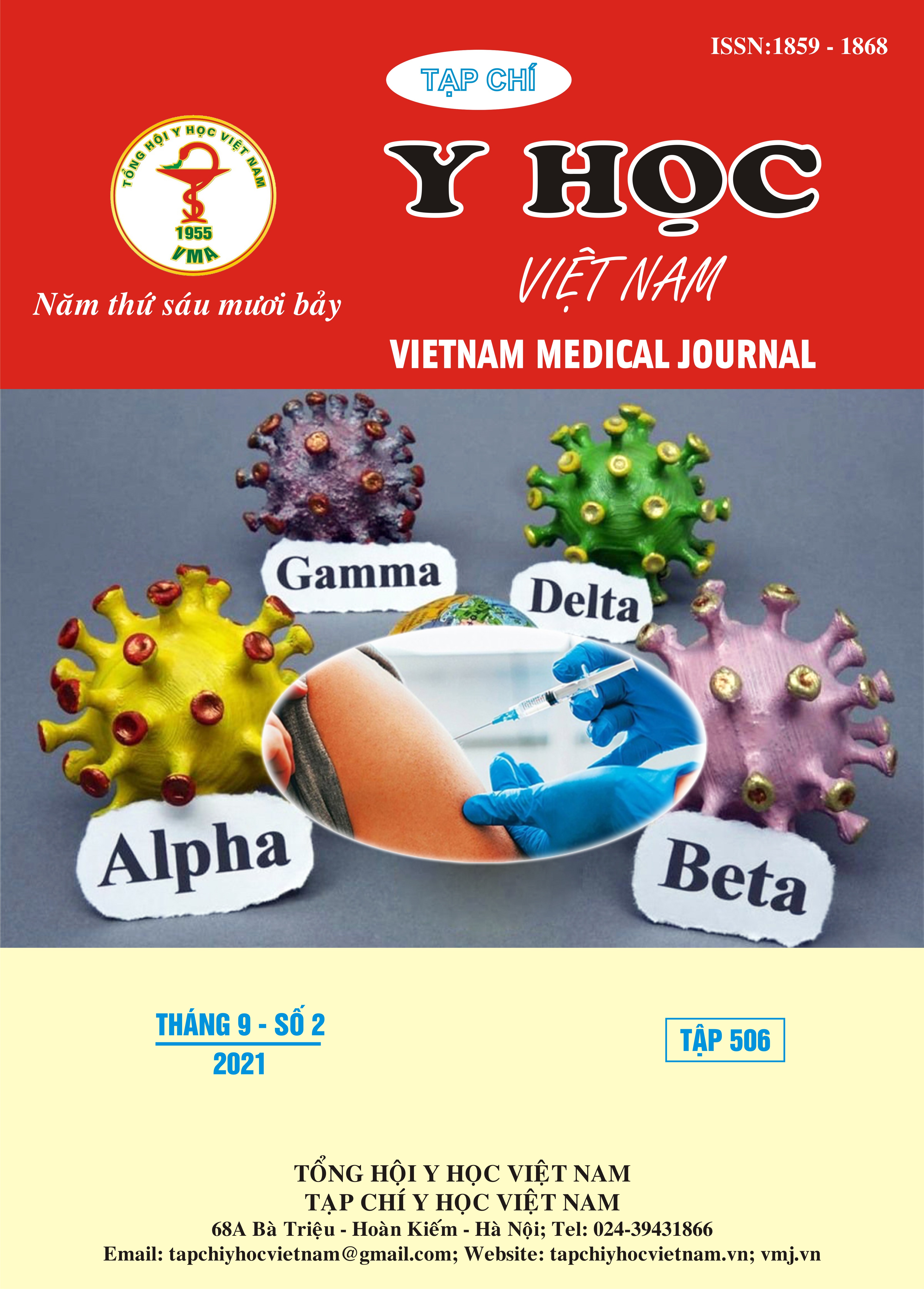STUDY THE TREATMENT RESULTS OF DECOMPENSATED CIRRHOSIS CAUSED BY HEPATITIS B VIRUS BY BONE MARROW STEM CELL TRANSPLANTATION
Main Article Content
Abstract
Objectives: To evaluate the effectiveness of autologous bone marrow stem cell transplantation for the treatment of hepatitis B decompensated cirrhosis. Subjects and methods: 29 patients with hepatitis B virus decompensated cirrhosis received bone marrow stem cells transplantation treatment, from June 2016 to August 2019 and general regimen treatment for patients with cirrhosis. Collect 300ml of bone marrow fluid, then filter the mononuclear cell mass, then inject into the liver through hepatic artery. The patients were followed up for 12 months and efficacy was assessed based on laboratory tests and Child-Pugh and MELD scores at 6 and 12 months. Results: serum albumin levels had statistically significant improvement at all time points of 6, 12months. Child score decreased statistically with p < 0.05; MELD score decreased, but the difference was not statistically significant, with p > 0.05. The difference in the Child-Pugh classification rate at 6 months was statistically significant compared with baseline, with p < 0.05. Conclusion: Stem cell transplantation in cirrhotic patients initially improves liver function, Child-Pugh score.
Article Details
Keywords
cirrhosis, stem cells transplantation, bone marrow, hepatitis B virus
References
2. Blachier, M., et al., The burden of liver disease in Europe: a review of available epidemiological data. Journal of hepatology, 2013. 58(3): p. 593-608.
3. Hoyert, D.L. and J. Xu, Deaths: preliminary data for 2011. National vital statistics reports : from the Centers for Disease Control and Prevention, National Center for Health Statistics, National Vital Statistics System, 2012. 61(6): p. 1-51.
4. Gordon, M.Y., et al., Characterization and clinical application of human CD34+ stem/progenitor cell populations mobilized into the blood by granulocyte colony-stimulating factor. Stem Cells, 2006. 24(7): p. 1822-30.
5. Terai, S., et al., Improved liver function in patients with liver cirrhosis after autologous bone marrow cell infusion therapy. Stem Cells, 2006. 24(10): p. 2292-8.
6. Fattovich, G., F. Bortolotti, and F. Donato, Natural history of chronic hepatitis B: special emphasis on disease progression and prognostic factors. Journal of hepatology, 2008. 48(2): p. 335-352.
7. Kim, J.K., et al., Autologous bone marrow infusion activates the progenitor cell compartment in patients with advanced liver cirrhosis. Cell Transplant, 2010. 19(10): p. 1237-46.
8. Saito, T., et al., Potential therapeutic application of intravenous autologous bone marrow infusion in patients with alcoholic liver cirrhosis. Stem Cells Dev, 2011. 20(9): p. 1503-10.
9. Mohamadnejad, M., et al., Phase 1 trial of autologous bone marrow mesenchymal stem cell transplantation in patients with decompensated liver cirrhosis. Arch Iran Med, 2007. 10(4): p. 459-66.


